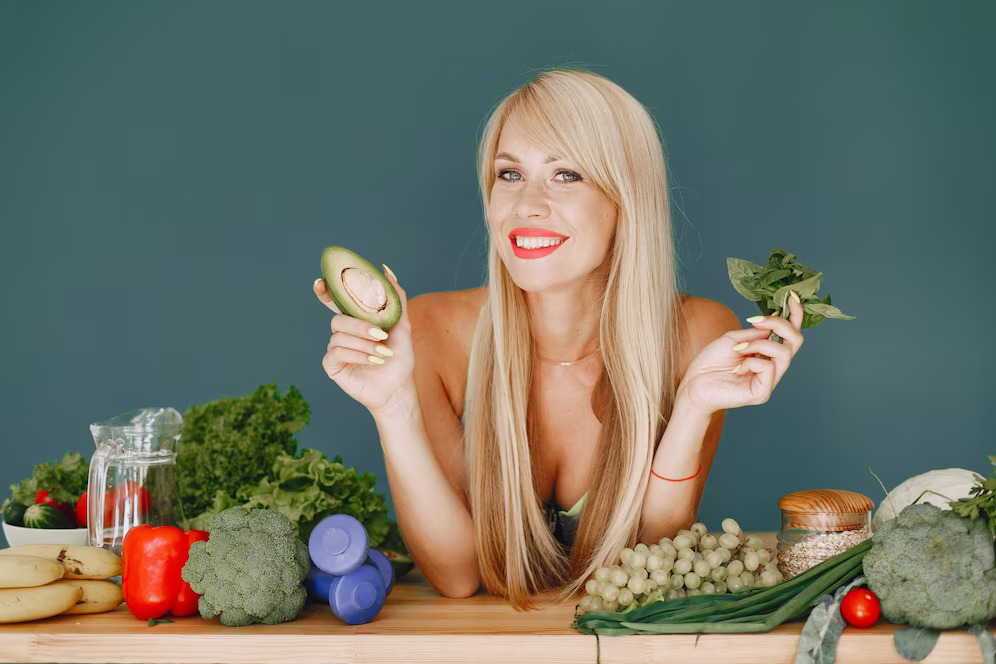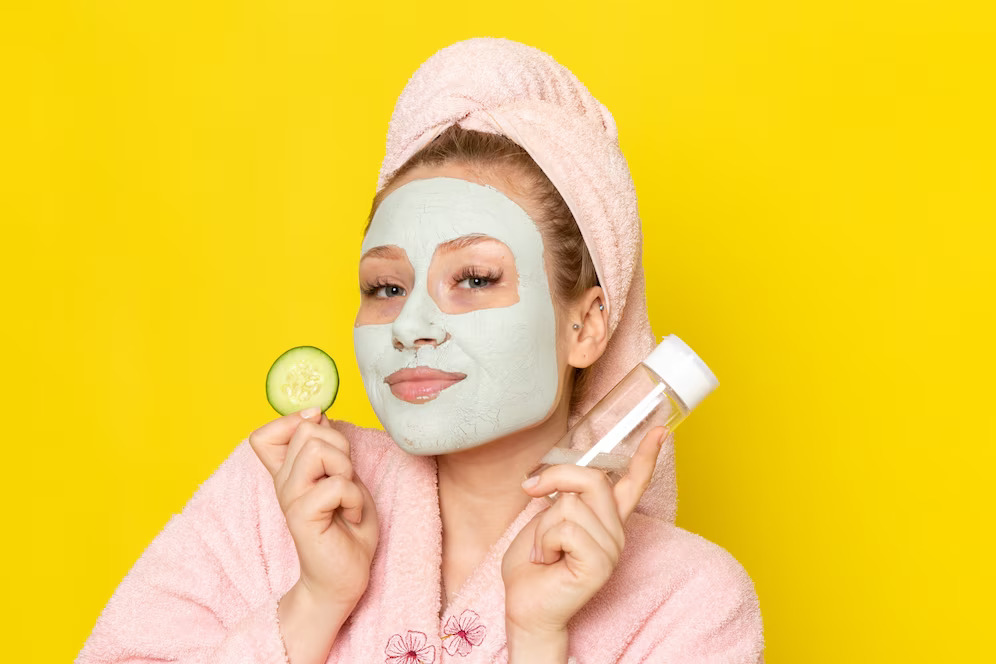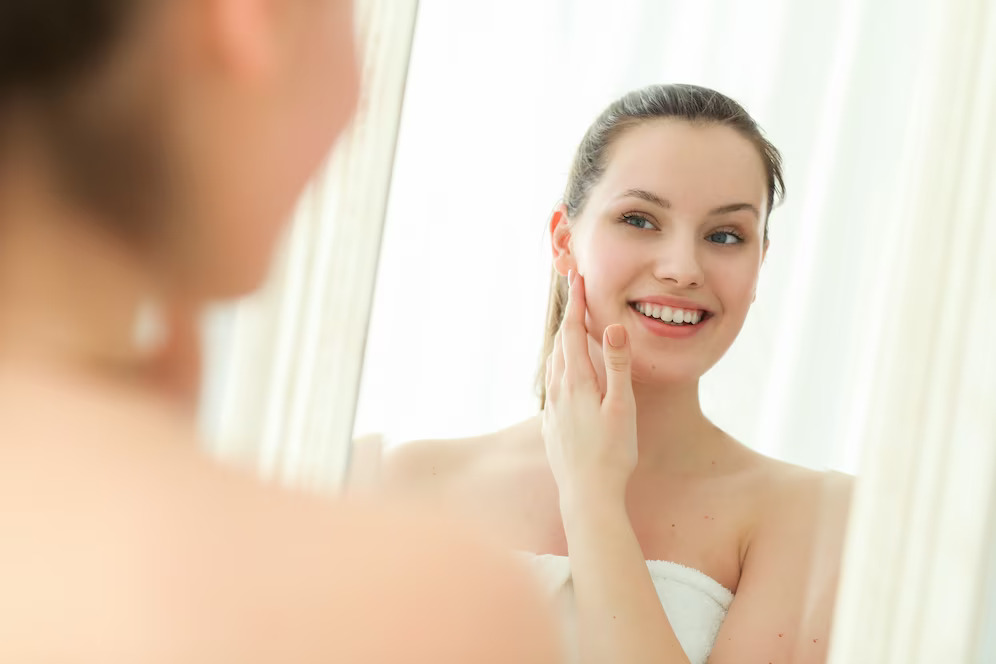In a world that often seeks instant beauty fixes, the true secret to radiant and healthy skin lies in the foods we consume. The connection between diet and skin health is profound, and by understanding this relationship, you can embark on a journey to achieve a naturally luminous complexion. In this comprehensive guide, we will delve into the world of a “Glowing Skin Diet” and explore the foods that can transform your skin from within.
Chapter 1: The Basics of a Glowing Skin Diet
Understanding the Role of Nutrition
To comprehend how diet impacts your skin, it’s crucial to recognize that your skin is an organ, and like any other organ, it requires essential nutrients to function optimally. Proper nutrition provides the building blocks that support skin health, including cell regeneration, hydration, and protection from external stressors.
The Building Blocks of Glowing Skin
Nutrients such as vitamins, minerals, proteins, and healthy fats play pivotal roles in maintaining your skin’s vitality. For instance, vitamin C aids in collagen production, a protein crucial for skin elasticity. Zinc supports the skin’s natural healing processes, and omega-3 fatty acids maintain its suppleness. By incorporating these nutrients into your diet, you can enhance your skin’s natural glow.
Chapter 2: Hydration for Healthy Skin
The Importance of Hydration
Hydration is the cornerstone of vibrant and youthful-looking skin. Water is essential for maintaining skin’s moisture balance, preventing dryness and flakiness, and promoting a plump and radiant complexion. Dehydration can lead to dull and tired-looking skin, emphasizing the significance of staying adequately hydrated.
Hydrating Foods for Skin
While drinking water is essential, you can also boost your skin’s hydration by consuming foods with high water content. Fruits like watermelon and cucumber, as well as vegetables like celery and lettuce, are excellent choices. These foods not only provide hydration but also deliver essential vitamins and antioxidants that benefit your skin.
Chapter 3: Antioxidants for Skin Protection
The Role of Antioxidants
Antioxidants are your skin’s best defense against the damaging effects of free radicals, which can accelerate skin aging and contribute to various skin issues. Antioxidants neutralize free radicals, protecting your skin from oxidative stress and keeping it looking youthful and healthy.
Top Antioxidant-Rich Foods
Berries, often referred to as “superfoods” for the skin, are abundant in antioxidants such as vitamin C and polyphenols. Dark chocolate, with its high cocoa content, is another antioxidant-rich treat. These foods can help combat the signs of aging, reduce inflammation, and promote a radiant complexion.
Chapter 4: Vitamins for Skin Vitality
Vitamin A: The Skin Vitamin
Vitamin A is often called the “skin vitamin” due to its pivotal role in maintaining healthy skin. It supports cell turnover, helping your skin shed old, damaged cells and replace them with fresh ones. Foods like carrots, sweet potatoes, and leafy greens are rich sources of vitamin A and can contribute to smoother and more youthful-looking skin.
Vitamin C: Collagen Booster
Collagen is a structural protein that provides skin with its firmness and elasticity. Vitamin C is essential for collagen production, making it a vital nutrient for skin health. Citrus fruits, bell peppers, and kiwi are all packed with vitamin C and can help you achieve firmer and more resilient skin.
Vitamin E: Skin’s Best Friend
Vitamin E is renowned for its antioxidant properties, which help protect the skin from environmental damage. It also promotes skin healing and reduces inflammation. Nuts, seeds, and avocados are excellent sources of vitamin E, making them valuable additions to your diet for healthier and more radiant skin.
Chapter 5: Healthy Fats for Skin Suppleness
The Benefits of Healthy Fats
Healthy fats, particularly omega-3 fatty acids, are crucial for maintaining skin suppleness and preventing dryness. These fats help fortify the skin’s natural barrier, locking in moisture and protecting it from external aggressors.
Sources of Omega-3 Fatty Acids
Fatty fish like salmon, mackerel, and sardines are rich sources of omega-3 fatty acids. Flaxseeds, chia seeds, and walnuts are plant-based options. By incorporating these foods into your diet, you can nourish your skin from the inside out, ensuring it remains soft and radiant.
Chapter 6: Collagen-Boosting Foods for Youthful Skin
The Role of Collagen
Collagen is the most abundant protein in your skin and is responsible for its structure and firmness. As you age, collagen production naturally declines, leading to wrinkles and sagging skin. However, certain foods can support collagen production, helping you maintain youthful-looking skin.
Foods That Support Collagen Production
Bone broth is a collagen powerhouse, containing essential amino acids that contribute to collagen synthesis. Citrus fruits, rich in vitamin C, also play a crucial role in collagen formation. Leafy greens provide chlorophyll, which aids collagen production. By incorporating these foods into your diet, you can help your skin stay firm and radiant.
Chapter 7: Foods That Fight Acne and Blemishes
The Connection Between Diet and Acne
For many years, the link between diet and acne has been a subject of debate. Recent studies have shown that certain foods can exacerbate acne, while others can help combat it. Understanding this connection can empower you to make dietary choices that promote clear and blemish-free skin.
Acne-Fighting Foods
Probiotics, found in yogurt, kefir, and fermented foods, support gut health and may reduce inflammation associated with acne. Zinc, present in foods like pumpkin seeds and lean meats, can help control oil production and reduce acne severity. Green tea, rich in antioxidants, has been shown to reduce sebum production and acne lesions. By incorporating these foods into your diet, you can contribute to clearer and healthier skin.
Chapter 8: Anti-Inflammatory Foods for Calm Skin
Inflammation and Skin Problems
Inflammation is at the root of many skin issues, including redness, irritation, and skin conditions like eczema and psoriasis. A diet rich in anti-inflammatory foods can help calm your skin and alleviate these concerns.
Foods with Anti-Inflammatory Properties
Turmeric, a spice known for its anti-inflammatory properties, can reduce redness and irritation when consumed regularly. Ginger, another anti-inflammatory powerhouse, can soothe skin conditions by reducing inflammation from within. Berries, with their high antioxidant content, can combat oxidative stress and contribute to calmer skin.
Chapter 9: Foods for Sun Protection
Eating Your Sunscreen
Sun protection isn’t limited to sunscreen lotions; certain foods can enhance your skin’s resilience to UV damage. While these foods are not a substitute for sunscreen, they can provide additional protection from the inside out.
Sun-Defensive Foods
Tomatoes, rich in lycopene, have been shown to increase skin’s natural SPF and protect against sunburn. Watermelon, high in antioxidants and water content, can help repair sun-damaged skin. Green tea, with its polyphenols, offers UV protection and reduces the risk of sunburn. By incorporating these foods into your diet, you can bolster your skin’s defenses against UV rays.
Chapter 10: Collagen-Boosting Recipes for Glowing Skin
DIY Collagen-Infused Smoothie
Achieving glowing skin can be as delicious as it is beneficial. Try this DIY collagen-infused smoothie that combines the power of collagen with antioxidant-rich berries and hydrating coconut water.
Ingredients:
- 1 scoop collagen powder
- 1/2 cup mixed berries (blueberries, strawberries, raspberries)
- 1/2 cup coconut water
- 1/2 cup Greek yogurt
- 1 tablespoon honey (optional)
- Ice cubes
Instructions:
- Place all ingredients in a blender.
- Blend until smooth.
- Pour into a glass and enjoy your skin-loving smoothie.
Collagen-Boosting Salad
Eating for glowing skin can also mean savoring a vibrant and nutritious salad. This collagen-boosting salad is packed with leafy greens, vitamin-rich veggies, and protein to support collagen production.
Ingredients:
- 2 cups mixed greens (spinach, kale, arugula)
- 1/2 cucumber, sliced
- 1/2 bell pepper, thinly sliced
- 1/4 red onion, finely chopped
- 1/2 cup cherry tomatoes, halved
- 4 oz grilled chicken breast or tofu (for vegetarians)
- 2 tablespoons olive oil
- 1 tablespoon balsamic vinegar
- Salt and pepper to taste
Instructions:
- In a large bowl, combine the mixed greens, cucumber, bell pepper, red onion, and cherry tomatoes.
- Top the salad with grilled chicken breast or tofu.
- Drizzle olive oil and balsamic vinegar over the salad.
- Season with salt and pepper to taste.
- Toss the salad until well combined.
- Serve and enjoy your collagen-boosting meal for glowing skin.
Chapter 11: Meal Planning for Glowing Skin
Creating a Skin-Friendly Meal Plan
Incorporating skin-loving foods into your daily meals requires thoughtful meal planning. By strategically including nutrient-rich ingredients, you can ensure that your skin gets the nourishment it needs.
Tips for Incorporating Glowing Skin Foods
- Prioritize fruits and vegetables: Aim to fill half your plate with colorful fruits and vegetables at each meal.
- Choose lean proteins: Opt for lean sources of protein like chicken, fish, and tofu.
- Embrace healthy fats: Incorporate sources of healthy fats such as avocados, nuts, and olive oil into your meals.
- Stay hydrated: Sip on water throughout the day to maintain proper hydration levels.
Sample Meal Plan
Here’s a sample meal plan that incorporates a variety of skin-friendly foods to promote radiant skin:
Breakfast:
- Greek yogurt topped with mixed berries and a drizzle of honey
- Whole-grain toast with avocado
Lunch:
- Collagen-boosting salad with grilled chicken breast or tofu
- A side of sliced watermelon
Dinner:
- Baked salmon with a side of steamed broccoli and quinoa
- A green tea for dessert
Chapter 12: Skincare Tips to Complement Your Diet
A Holistic Approach to Skin Health
While diet plays a pivotal role in skin health, it’s equally important to complement it with a proper skincare routine. A holistic approach that combines nutritious eating with effective skincare can amplify the benefits for your skin.
Daily Skincare Routine
- Cleansing: Begin and end your day with a gentle cleanser to remove impurities.
- Toning: Apply a toner to balance your skin’s pH levels.
- Moisturizing: Hydrate your skin with a suitable moisturizer.
- Sunscreen: Protect your skin from UV damage with a broad-spectrum sunscreen.
- Nighttime Care: Incorporate serums and creams that target specific skin concerns.
Chapter 13: Common Myths About Diet and Skin
Debunking Diet-Related Skin Myths
In the world of skincare and nutrition, myths often abound. Let’s separate fact from fiction and address some common misconceptions about diet and its impact on your skin.
The Truth About Chocolate and Breakouts
Contrary to popular belief, chocolate itself may not be the primary cause of acne. However, highly processed chocolate with added sugars and dairy can potentially trigger breakouts in some individuals. Opting for dark chocolate with higher cocoa content may be a wiser choice for those concerned about acne.
Chapter 14: Consultation with a Dermatologist
When to Seek Professional Advice
While a glowing skin diet can work wonders, there are instances when professional guidance is necessary. If you experience persistent skin issues, it’s essential to consult with a dermatologist.
Working with a Dermatologist
A dermatologist can assess your skin’s unique needs and recommend treatments or skincare products tailored to your specific concerns. Collaborating with a dermatologist ensures that you receive personalized care to achieve your desired skin goals.
Chapter 15: Conclusion
Achieving Radiant Skin Through Nutrition
In conclusion, the path to radiant and glowing skin is paved with the foods you eat. By understanding the vital role that nutrition plays in skin health, you can make informed dietary choices that enhance your complexion. Remember that the journey to beautiful skin is a holistic one, encompassing both what you put in your body and how you care for your skin on the outside.
Chapter 16: FAQs: Your Glowing Skin Diet Questions Answered
- Can I see immediate results from a glowing skin diet?
- Are there foods I should avoid for better skin?
- How much water should I drink for skin hydration?
- What’s the best way to incorporate collagen into my diet?
- Can diet really replace sunscreen for sun protection?
Chapter 17: Additional Resources
Recommended Books on Nutrition and Skin Health
- “Eat Your Way to Beautiful Skin” by Allison Tannis
- “The Beauty Diet: Unlock the Five Secrets of Ageless Beauty from the Inside Out” by David Wolfe

David M is a seasoned author renowned for his expertise in health tips and homemade remedies. With a passion for wellness, he diligently researches and meticulously analyzes a plethora of online resources, ensuring their credibility. David’s dedication shines through as he curates invaluable information, catering to health enthusiasts.




